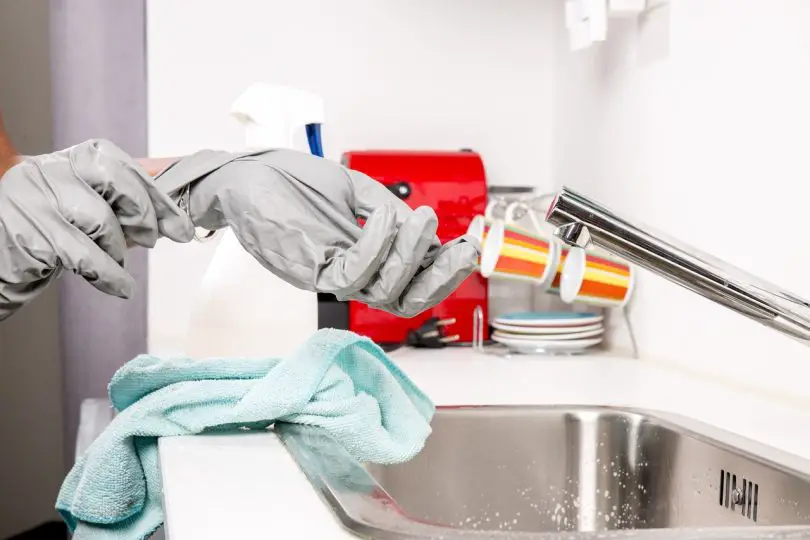You may not realize it, but the very products you use to keep your home clean and fresh can pose a serious risk to your health. Chemical burns, a painful and potentially debilitating injury, can occur when you come into contact with certain cleaning agents. However, there is hope.
By implementing safer cleaning methods, you can significantly lower the risk of chemical burns and protect yourself and your loved ones from harm. But how exactly can you achieve this?
Well, in this discussion, we will explore a range of strategies and techniques that will help you navigate the world of cleaning products with confidence and peace of mind.
So, let’s dive in and discover how you can create a safer environment while keeping your home spotless.
Understanding the Risks of Chemical Burns
Understanding the risks of chemical burns is crucial for promoting safety in cleaning practices.
When working with cleaning products that contain chemicals, it’s important to be aware of the potential dangers they pose. Chemical burns can occur when these substances come into direct contact with your skin or eyes, causing damage to the tissues. These burns can range from mild to severe, depending on the strength and duration of exposure to the chemical.
It’s essential to know the specific hazards associated with each cleaning product you use, as different chemicals have different effects on the body. Some chemicals may cause irritation, while others can result in severe burns or even permanent scarring.
By understanding the risks, you can take appropriate precautions to protect yourself and others. This includes wearing protective clothing, such as gloves and goggles, when handling chemicals, as well as ensuring proper ventilation in the workspace. Additionally, it’s crucial to follow the instructions provided by the manufacturer for safe handling and storage of cleaning products.
Being knowledgeable about the risks of chemical burns empowers you to make informed decisions and prioritize safety in your cleaning practices.
Common Chemicals to Watch Out for
To ensure your safety when handling cleaning products, it’s important to be aware of the common chemicals that can cause chemical burns. These chemicals can be found in various cleaning products and can pose a serious risk if not handled properly.
One common chemical to watch out for is sodium hydroxide, also known as lye. It’s often found in drain cleaners and oven cleaners and can cause severe burns if it comes into contact with your skin or eyes.
Another chemical to be cautious of is bleach, which is commonly used as a disinfectant and stain remover. When used improperly or mixed with other chemicals, bleach can release toxic fumes that can irritate your respiratory system and cause burns on your skin.
Ammonia is another chemical to watch out for, as it’s commonly found in glass cleaners. It can cause irritation to your skin and respiratory system, and if mixed with bleach, it can produce a toxic gas.
Lastly, hydrogen peroxide, often used as a disinfectant, can cause burns and skin irritation if used in high concentrations.
To minimize the risk of chemical burns, it’s important to read the labels of cleaning products, use them in well-ventilated areas, wear protective gloves and eyewear, and follow proper dilution instructions.
Choosing Safer Cleaning Products
What are some ways you can choose safer cleaning products to lower the risk of chemical burns?
When selecting cleaning products, it’s important to read labels carefully and look for products that are labeled as non-toxic, environmentally friendly, or biodegradable. These products are typically made with safer ingredients that are less likely to cause chemical burns.
Additionally, consider opting for products that are fragrance-free, as many fragrances contain chemicals that can irritate the skin and cause burns. It’s also advisable to choose products that are free from harsh chemicals such as bleach, ammonia, and chlorine. These chemicals can be highly corrosive and increase the risk of chemical burns.
Instead, look for alternatives that use natural ingredients like vinegar, baking soda, or hydrogen peroxide, which are effective for cleaning without posing a significant risk of burns.
Lastly, consider using cleaning products that come in spray bottles rather than aerosol cans, as aerosol products can be more easily inhaled, potentially causing respiratory issues.
Reading Labels for Safety Information
When selecting cleaning products, it’s crucial to carefully read labels for safety information that can help lower the risk of chemical burns. The labels on cleaning products provide valuable information about potential hazards and proper usage. By taking the time to read and understand these labels, you can protect yourself and others from harmful chemical burns.
Start by looking for signal words such as ‘danger’ or ‘warning’ on the label. These signal words indicate the level of risk associated with the product. Products labeled with ‘danger’ are more hazardous than those labeled with ‘warning.’
Next, pay attention to the specific hazards listed on the label. This can include information about skin irritants, corrosive substances, or flammable ingredients. Understanding the potential dangers of a cleaning product can help you take necessary precautions, such as wearing protective gloves or using in a well-ventilated area.
Additionally, the label will provide instructions for safe handling and use. Follow these instructions carefully to minimize the risk of chemical burns. This may include diluting the product, avoiding contact with skin or eyes, or using the product in a specific manner.
Lastly, look for any first aid instructions provided on the label. In case of accidental exposure or chemical burn, knowing the proper first aid measures can make a significant difference in reducing the severity of the injury.
Proper Storage and Handling Techniques
Properly storing and handling cleaning products is essential to reduce the risk of chemical burns. By following these techniques, you can ensure the safety of yourself and others.
First and foremost, always store cleaning products in their original containers. These containers are specifically designed to hold the chemicals safely and provide important information about their contents. Make sure to keep the containers tightly closed and stored in a cool, dry place away from direct sunlight.
It’s also crucial to keep cleaning products out of reach of children and pets. Consider using locked cabinets or high shelves for storage.
When handling cleaning products, remember to wear appropriate protective gear, such as gloves and goggles, to prevent skin and eye contact with the chemicals. Additionally, never mix different cleaning products together, as this can result in dangerous chemical reactions. Always read and follow the manufacturer’s instructions for use, including any recommended dilution ratios or application techniques.
Lastly, it’s important to properly dispose of any unused or expired cleaning products. Follow local regulations or contact your local waste management facility for proper disposal methods.
Creating a Ventilation System for Safer Cleaning
To improve safety while cleaning, consider implementing a ventilation system to reduce the risk of chemical exposure. Adequate ventilation is crucial in maintaining a healthy and safe environment when working with cleaning chemicals. When cleaning, harmful fumes and vapors can be released into the air, posing a risk to your respiratory system. By installing a ventilation system, you can effectively remove these harmful substances from the air, minimizing the chances of chemical burns or other health issues.
A well-designed ventilation system should be able to remove airborne contaminants and maintain a constant flow of fresh air. This can be achieved through the use of exhaust fans, air purifiers, and proper air circulation. Exhaust fans should be strategically placed in areas where cleaning activities are conducted, such as bathrooms, kitchens, or storage rooms. They should be powerful enough to effectively pull out the contaminated air and expel it outside. Air purifiers can also be used to filter out any remaining pollutants, ensuring that the air is clean and safe to breathe.
In addition to mechanical ventilation, it’s important to ensure that there’s adequate natural ventilation. This can be achieved by opening windows or using air vents to allow fresh air to enter and circulate within the space. By combining both mechanical and natural ventilation methods, you can create a comprehensive ventilation system that effectively reduces the risk of chemical exposure during cleaning activities.
Protective Gear and Precautions
To ensure your safety while cleaning, it’s essential to take proper precautions and wear protective gear. Chemical burns can cause serious harm to your skin and eyes, so it’s crucial to protect yourself.
Always start by reading the labels on cleaning products to understand their hazards and recommended protective measures. When working with chemicals, wear gloves made of waterproof material such as nitrile or neoprene. These gloves provide a barrier between your skin and the chemicals, reducing the risk of burns.
Additionally, wearing safety goggles or a face shield can protect your eyes from potential splashes or spills. It’s important to choose goggles that fit snugly and provide full coverage.
For situations where there’s a risk of inhaling harmful fumes or dust, wear a respirator or a mask with appropriate filters. Remember to replace filters regularly and follow the manufacturer’s instructions.
Lastly, never mix different cleaning products, as this can create dangerous chemical reactions. By following these precautions and wearing the necessary protective gear, you can significantly reduce the risk of chemical burns and ensure your safety while cleaning.
Treating Chemical Burns and Seeking Medical Help
If you experience a chemical burn, it’s important to promptly treat the injury and seek medical attention. The first step in treating a chemical burn is to remove any contaminated clothing or jewelry from the affected area. Rinse the burn with cool, running water for at least 20 minutes. Avoid using ice or very cold water, as it can further damage the skin. Gently pat the area dry with a clean towel, being careful not to rub or irritate the burn.
Once the burn is dry, apply a sterile, non-stick dressing to protect the area from infection. Avoid using adhesive bandages, as they can stick to the burn and cause further damage when removed. Over-the-counter burn creams or ointments can provide some relief and promote healing, but it’s best to consult a healthcare professional before applying any medication.
Seeking medical help is crucial, especially for severe chemical burns. Call emergency services or go to the nearest hospital immediately if the burn covers a large area, is deep, or involves the face, hands, feet, or genitals. Chemical burns can cause serious complications and require specialized treatment.







